A Beginner's Guide To The Korean Alphabet (Hangul)
Learn the Fundamentals of The Korean Alphabet (Hangul). Vowels, Consonants, And Basic Word Composition Galore.

When learning to read or write in English, the first thing you typically learn is the alphabet.
Korean is the same way. But instead of having a song with a universalized order with all the letters mixed together, the Korean alphabet (Hangul) is generally separated out between consonants and vowels.
This blog is to introduce you all to the basics of Korean Hangul, for more information on the history of Hangul and how it came to be, check out our origins of Hangul blog.
CONSONANTS
자음
In total, there are 19 consonants, but 14 base consonants. The additional five can be made with the base consonants (more about this later).
Korean consonants have formal names, this is likely because the sounds of the consonant can change depending on the vowel it is combined with. If this does not make sense now don't worry, we will review it again later.
Before introducing the formal names, we want to make sure you all know the rough sounds of each Korean letter.
ㄱ = g or k
ㄴ = n
ㄷ = d
ㄹ = l or r
ㅁ = m
ㅂ = b
ㅅ = s
ㅇ = none/ng
ㅈ = j
ㅊ = ch
ㅋ = k
ㅌ = t
ㅍ = p
ㅎ = h
Now at this point, you may be wondering how English letters can be sounds of Korean letters? Because typically when you sing the English alphabet it goes ay, bee, sea, dee, etc.
 This isn't necessarily the case for Korean. For example the way you say ㅈ, isn't going to be "jay" like implied above. But instead we are going to have to look at the formal name to get a better ideas of how to say these letters.
This isn't necessarily the case for Korean. For example the way you say ㅈ, isn't going to be "jay" like implied above. But instead we are going to have to look at the formal name to get a better ideas of how to say these letters.
ㄱ = 기역 (gi-yeok)
ㄴ = 니은 (ni-eun)
ㄷ = 디귿 (di-geut)
ㄹ = 리을 (ri-eul)
ㅁ = 미음 (mi-eum)
ㅂ = 비읍 (bi-eup)
ㅅ = 시옷 (si-ot)
ㅇ = 이응 (i-eung)
ㅈ = 지읒 (ji-eut)
ㅊ = 치읓 (chi-eut)
ㅋ = 키읔 (ki-euk)
ㅌ = 티읕 (ti-eut)
ㅍ = 피읖(pi-eup)
ㅎ = 히읗 (hi-eut)
Notice there is mostly a pattern with the formal names. For the first block, the consonant is always paired with the vowel ㅣ. We will give more information about vowels later. But in short, this vowel helps complete the sound of a consonant.
Then in the second block, there is a combination of the selected consonant, ㅇ, and the vowel ㅡ (with the exception of 디귿).
When Korean are first learning the basics of Hangul, they recite the consonants sound by shortening the formal name. For example, gi-yeok can be shortened to just gi.
Something to note, in this case, the i is a short i sound. So for gi, instead of sounding like guy, it would sound like ghee.

Another example, for 니, instead of it being the same sound as the first syllable of nice, it would actually sound like knee.

So, you too can practice the consonants simply by reciting, "gi, ni, di, ri, mi, bi, si, i, ji, chi, ki, ti, pi, hi."
Now that we've introduced the base consonants, we can go a step further and share the special cases are when there are double ("twin") letters (쌍). These sound very similar to their non-doubled counterparts but slightly more staccato.
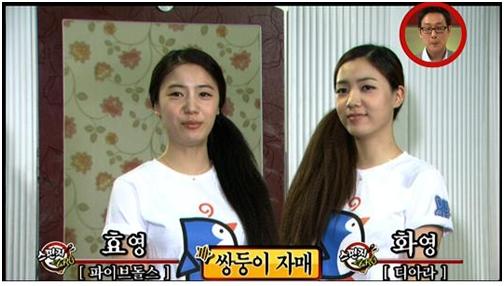
ㄲ = 쌍기역 (ssang gi-yeok)
ㄸ = 쌍디귿 (ssang di-geut)
ㅃ = 쌍비읍 (ssang bi-eup)
ㅆ = 쌍시옷 (ssang si-ot)
ㅉ = 쌍지읒 (ssang ji-eut)
For a handy cheat sheet, we've included a table of the information we shared above. The of the consonants in the below table is considered to be the alphabetical order.
| Letter | Formal Name | Sound |
| ㄱ | 기역 | gi |
| ㄲ | 쌍기역 | kki |
| ㄴ | 니은 | ni |
| ㄷ | 디귿 | di |
| ㄸ | 쌍디귿 | ddi |
| ㄹ | 리을 | li/ri |
| ㅁ | 미음 | mi |
| ㅂ | 비읍 | bi |
| ㅃ | 쌍비읍 | bbi |
| ㅅ | 시읏 | si |
| ㅆ | 쌍시옷 | ssi |
| ㅇ | 이응 | none/ng |
| ㅈ | 지읒 | ji |
| ㅉ | 쌍지읒 | jji |
| ㅊ | 치읓 | chi |
| ㅋ | 키읔 | ki |
| ㅌ | 티읕 | ti |
| ㅍ | 피읖 | pi |
| ㅎ | 히읗 | hi |
VOWELS
모음
There are ten base vowels. An additional 11 can be made from combinations of the base vowels, therefore, creating a total of 21.
Unlike consonants, there are no formal names for vowels. So we will only introduce the sounds.
Generally, when learning vowels, they are paired with the consonant ㅇ. We noted above that sometimes ㅇ has no sound, well it makes it a great neutral pairing with a vowel which adds sound.
The following are the base vowels.
ㅏ = a
ㅑ = ya
ㅓ = eo
ㅕ = yeo
ㅗ = o
ㅛ = yo
ㅜ = u
ㅠ = yu
ㅡ = eu
ㅣ = i
Some things to note, like mentioned in the consonants section, the ㅣ may have the i sound association, but instead of a long i (i.e. pie, tie, lie), it is a short i sound (i.e. hit, kit, lip).
Also for ㅏ, instead of a, like when you sing it in the alphabet song (ay), it actually sounds like "aah." Likewise for ㅜ, instead of a "you" sound, it is more like "ooo."
Now moving on to the vowel combinations. With combinations there are two ways two sound them out, the way listed below is how they would sound in words. Or in the table below, we have listed how the combination vowels are composed. This is mostly to help with spelling.
ㅐ = ae
ㅒ = yae
ㅔ = e
ㅖ = ye
ㅘ = wa
ㅙ = wae
ㅚ = oe
ㅝ = weo
ㅞ = we
ㅟ = wi
ㅢ = ui
There are some uncommon vowels because they have very similar sounds to the others. One of them is ㅒ, because it has a very similar sound to ㅐ, or ㅔ.
Another uncommon vowel is ㅞ because it can sound very similar to ㅙ, or ㅚ.
Another handy cheat sheet for the vowels, listed in alphabetical order.
| Vowel | Sound | Composition |
| ㅏ | a | Base |
| ㅐ | ae | 아이 |
| ㅑ | ya | Base |
| ㅒ | yae | 야이 |
| ㅓ | eo | Base |
| ㅔ | e | 어이 |
| ㅕ | yeo | Base |
| ㅖ | ye | 여이 |
| ㅗ | o | Base |
| ㅘ | wa | 오아 |
| ㅙ | wae | 오애 |
| ㅚ | oe | 오이 |
| ㅛ | yo | Base |
| ㅜ | u | Bese |
| ㅝ | weo | 우어 |
| ㅞ | we | 우에 |
| ㅟ | wi | 우이 |
| ㅠ | yu | Base |
| ㅡ | eu | Base |
| ㅢ | ui | 으이 |
| ㅣ | i | Base |
Stroke Order
Now in the digital age, it seems pretty archaic to write things with pen and paper. But when writing Hangul, there is an intended stoke order.
Below are the stoke orders for the 14 base consonants.

However some of the letters such as ㅈ,ㅊ, and ㅎ, look slightly different from the typed version and the way they are hand-written so we've included the written stroke order below.

Below are the stroke orders for the ten base vowels.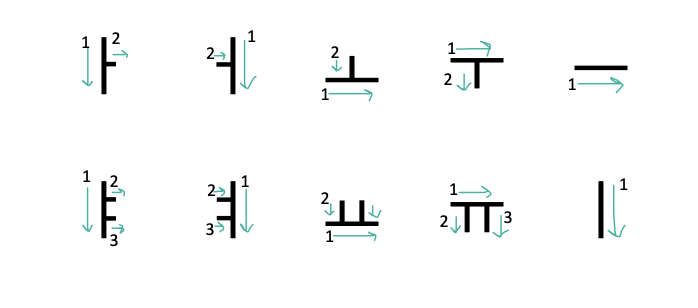
Composing Words
Generally, Korean words are made of blocks. There are just a couple of rules we will introduce today.
First, in a block, a consonant will always come first. For example let's take the word 가, which means go. Note that the ㄱ (which is a consonant) comes first, not ㅏ. If the vowel came first the word would be ㅏㄱ, which does not make sense.
Secondly, sometimes blocks of words can have a consonant (or double consonant on the bottom). This is called a 받침 (batchim).

For example, the word for hand in Korean in 손. Since there is a ㄴ on the very bottom is the 받침. However the Korean word for cow is 소, This word does not have a 받침.
So if the bottom-most letter is a consonant, then that block has a 받침. If the bottom-most letter is a vowel, then that block does not have a 받침.
While on the topic of 받침, sometimes a combination of consonants can appear as the 받침.
There are only a total of 11 consonant combinations that you will find in words. We list those combinations below with some example words.
ㄱㅅ = 품삯: wages

ㄴㅈ = 앉다: to sit
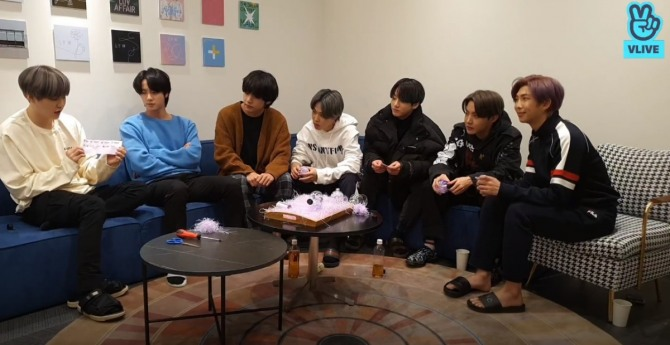
ㄴㅎ = 않다: be not
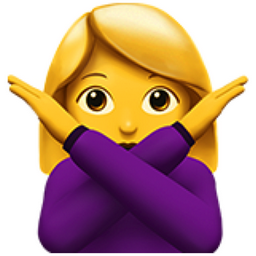
ㄹㄱ = 읽다: to read

ㄹㅁ = 삶다: to boil

ㄹㅂ = 짧다: short
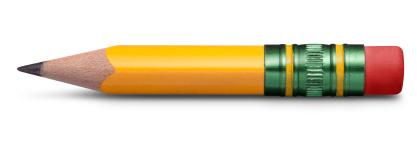
ㄹㅅ = 돐: first year birthday
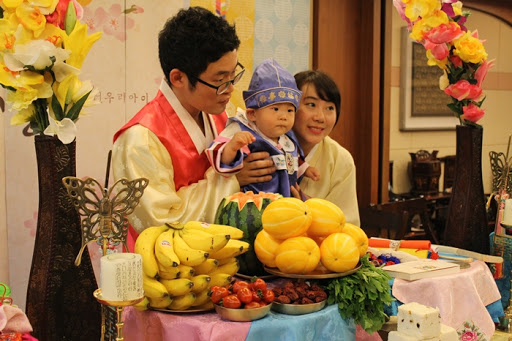
ㄹㅍ = 읊다: to recite

ㄹㅎ = 뚫다: to pierce a hole

ㅂㅅ = 없다: nothing

We hope this guide to Hangul helps you all nail your Korean basics. If you want more practice with Korean, check out our learning Korean by podcast, or app blogs.
Soon you all will be reading and writing in Korean like a native!
Thank you so much, and please let us know if you have any questions or concerns in the comments below.